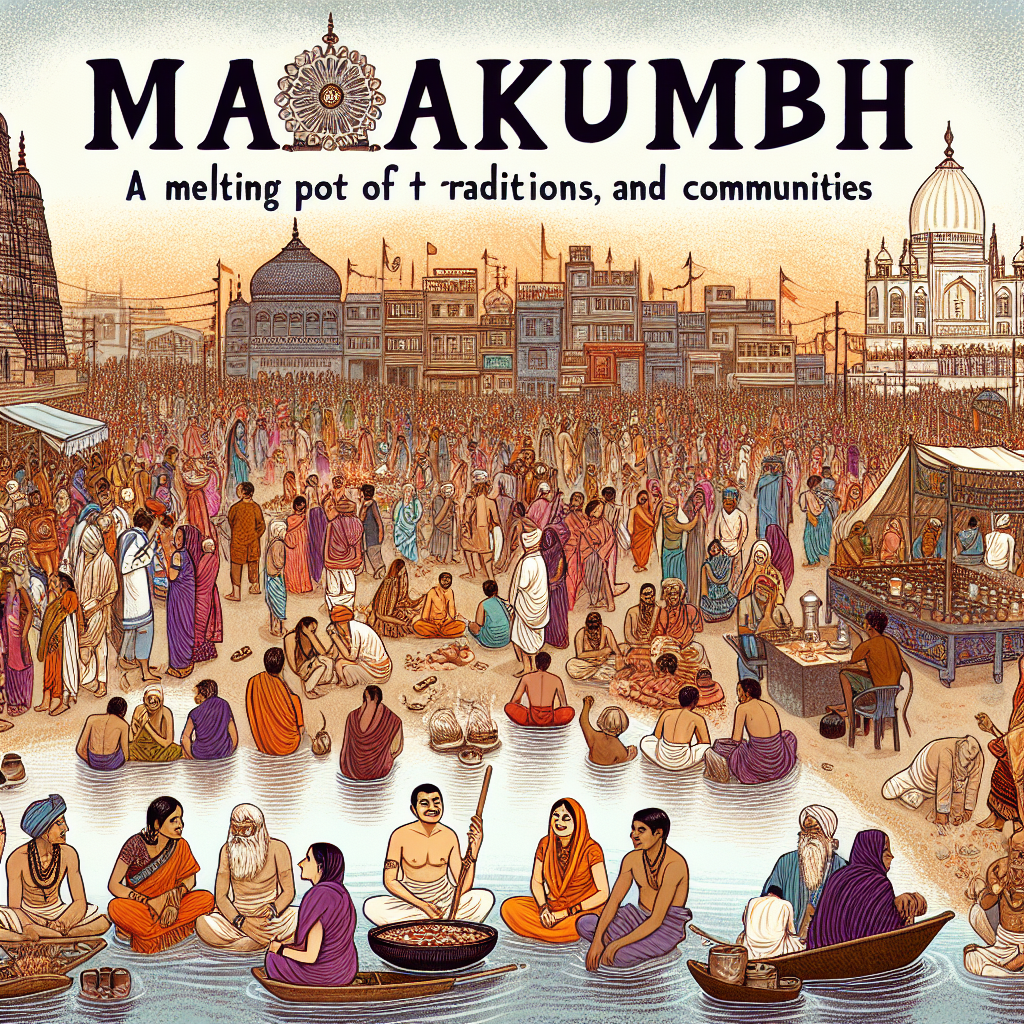Mahakumbh: A Melting Pot of Traditions, Rituals, and Communities
The Mahakumbh, often referred to simply as Kumbh Mela, is one of the largest religious gatherings in the world, drawing millions of devotees from diverse backgrounds and cultures. Held every twelve years at one of four sacred locations in India—Haridwar, Allahabad (Prayagraj), Nashik, and Ujjain—the Mahakumbh is not just a religious event; it is a vibrant tapestry that weaves together traditions, rituals, and communities, transcending geographical and cultural boundaries.
Historical Significance
The origins of the Kumbh Mela date back to ancient Hindu scriptures, where it is believed that during a cosmic battle between gods and demons for the nectar of immortality (amrita), four drops fell to the earth at the four designated locations. This celestial event was mythologized in the Puranas, establishing the significance of these sites as places of divine connection and spiritual rejuvenation. Over centuries, this symbolic act has evolved into a grand celebration, attracting pilgrims, saints, and spiritual seekers alike.
A Convergence of Cultures
The Mahakumbh is a microcosm of Indian society, showcasing an astonishing diversity of traditions and cultural expressions. Individuals from various backgrounds—the affluent and the economically marginalized, the city-dwellers and the villagers—come together in a spirit of unity and reverence. Here, the social fabric is woven together not just by shared beliefs but also by the rich traditions of food, music, art, and folklore that flourish during the event.
Street vendors offer an array of traditional delicacies from different regions, while artists and performers showcase folk dances and music, illuminating the rich cultural mosaic of India. This exchange of traditions fosters a sense of belonging and mutual respect, making the Mahakumbh a unique platform for intercultural dialogue and understanding.
Spiritual Practices and Rituals
At the heart of the Mahakumbh lies its myriad rituals, each steeped in spiritual significance. The most iconic practice is the ritual bathing in the sacred rivers, believed to purify the soul and wash away sins. Devotees often stand in long queues, waiting for their moment under the heavenly waters, demonstrating remarkable faith and devotion.
In addition to bathing, the Mahakumbh features numerous religious discourses, seminars, and cultural programs. Renowned spiritual leaders share their teachings, while sadhus (holy men) conduct elaborate rituals and ceremonies, drawing both curiosity and deep contemplation from the crowd. The site becomes a bustling spiritual marketplace, where seekers can find wisdom, healing, and blessings amidst the vibrant chaos.
Environmental and Social Responsibility
In recent years, as the Mahakumbh has gained global attention, there has been a growing emphasis on sustainability and social responsibility. Initiatives have emerged to address environmental concerns, such as waste management and river pollution, ensuring that the cultural significance of the gathering does not come at the cost of ecological degradation. Local communities and government bodies work together to facilitate clean-up drives and promote eco-friendly practices among pilgrims.
Moreover, the Mahakumbh serves as a platform for social awareness campaigns, with various NGOs and organizations promoting issues like health, education, and women’s empowerment. This integration of spirituality with social consciousness reflects the evolving nature of the Kumbh Mela, adapting to contemporary challenges while remaining deeply rooted in tradition.
The Mahakumbh Today and Tomorrow
As we step into an era dominated by technology and rapid globalization, the Mahakumbh continues to thrive as a bastion of cultural heritage and spiritual renewal. It remains a pilgrimage that offers solace, connection, and reflection, all while bridging gaps between ancient traditions and modern realities.
The next Mahakumbh, scheduled in Prayagraj in 2025, promises to embody this essence further, bringing together an ever-growing community of pilgrims eager to partake in a journey of divine discovery. Through its grandeur, unity, and celebration of diversity, the Mahakumbh stands as a testament to the enduring power of faith and the beauty of human connection in an increasingly fragmented world.
In Conclusion
The Mahakumbh is not simply about rites and rituals; it is a profound exploration of humanity itself. It invites us to witness and participate in a remarkable convergence of traditions, communities, and beliefs—fostering a greater understanding of what it means to be a part of the global family. As we look forward to future gatherings, the legacy of the Mahakumbh promises to illuminate spiritual paths, celebrate cultural diversity, and inspire generations to come.

